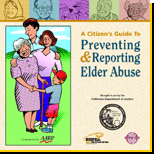Breach of fiduciary duty commonly falls under the following three categories:
1. Breach of reasonable care (negligence) [CACI 4101];
2. Breach of duty of loyalty [CACI 4102] ; and/or
3. Breach of confidentiality [CACI 4103].
Of course, intentional wrongs such as fraud (fiduciary fraud) as well as negligent misrepresentation also constitute a breach of fiduciary duty.
The elements of a cause of action for breach of fiduciary duty are:
(1) Duty: Existence of a fiduciary duty;
(2) Breach: The breach of that duty; and
(3) Causation of Damages: Damage proximately caused by that breach.
Mosier v. Southern California Physicians Insurance Exchange (1998) 63 Cal.App.4th 1022, 1044.
Note: In certain cases, punitive damages may be available in specifically defined egregious cases (Hobbs v. Bateman Eichler, Hill Richards, Incorporated (1985) 164 Cal.App.3d 174).
But attorney’s fees are not generally recoverable in breach of fiduciary causes of action (Allstate Insurance Co. v. Superior Court (2007) 151 Cal. App. 4th 1512, 1528). The measure and types of damage relief available in breach of fiduciary claims depend on the nature of the breach.
Because breach of fiduciary duty is a hybrid of a contract and tort action, courts sometimes modify, and/or vary in their interpretations of issues such as, for example, damages and the statute of limitations.
FRAUD AND MISREPRESENTATION LAW IN CALIFORNIA
California law allows persons to recover damages for intentional fraud as well as negligent misrepresentations if certain elements are sufficiently plead and proved.
WHAT IS FRAUD?
Fraud is using deceit or dishonest means for the purpose of depriving another of money, property or a legal right.
This article discusses types of fraud, pleading and proving the elements thereof.
TYPES OF CIVIL TORT FRAUD AND MISREPRESENTATION:
Intentional fraud and deceit occur when the perpetrator uses deceit (false important facts) to convince the victim to rely on the false facts. Then the victim reasonably relied on and was harmed by the deceit.
Promissory fraud occurs when the perpetrator makes a promise that is important to the transaction that he or she never intends to (and never does) perform, in order to induce the victim to rely victim rely on the promise. Then the victim must reasonably rely on and be harmed by the false promise.
Compare breach of contract where a party makes a genuine promise but later breaks the promise.
Concealment fraud occurs when there is a fiduciary or other relationship between the parties where there is a duty of full disclosure. The concealing person, with an intention to deceive, does not disclose important facts that the concealing person knows but the victim does not and could not know. Further, the victim reasonably relied on and was harmed by the concealment.
Embezzlement: “Embezzlement is the fraudulent appropriation of property by a person to whom it has been intrusted [entrusted]” (Criminal CA Penal Code Section 503). From the civil relief standpoint, embezzlement may create various causes of action such as, for example, conversion (wrongful taking of property), fraud, and breach of fiduciary duty.
Constructive fraud (negligent misrepresentation) occurs when the perpetrator misrepresents to the victim that an important false fact is true. But the perpetrator may have honestly believed that the false representation is true. Yet, the perpetrator had no reasonable grounds for believing the representation was true when he or she made it; and he or she intends that victim rely on the representation. The victim must reasonably rely on and be harmed by the false representation.
Civil fraud, deceit and misrepresentation are defined in Civil Code Sections 1709, 1710, 1572 and 1573.
Fraud, Deceit & Misrepresentation
Fraudulent misrepresentation occurs when one makes representation with intent to deceive and with the knowledge that it is false. An action for fraudulent misrepresentation allows for a remedy of damages and rescission.
$107,692.30 <----- click here
See; link is below:
Fraudulent misrepresentation occurs when one makes representation with intent to deceive and with the knowledge that it is false. An action for fraudulent misrepresentation allows for a remedy of damages and rescission.
$107,692.30 <----- click here
See; link is below:
Case Number: BP099211
FULLER, EDWINA – CONSERVATORSHIP
Case Taken Under Submission August 11, 2015
Case Number: BP135381
FULLER, EDWINA - DECEDENT
Case Taken Under Submission August 12, 2015
http://www.lacourt.org/casesummary/ui/
FULLER, EDWINA – CONSERVATORSHIP
Case Taken Under Submission August 11, 2015
Case Number: BP135381
FULLER, EDWINA - DECEDENT
Case Taken Under Submission August 12, 2015
http://www.lacourt.org/casesummary/ui/











No comments:
Post a Comment
All comments are reviewed before posting.